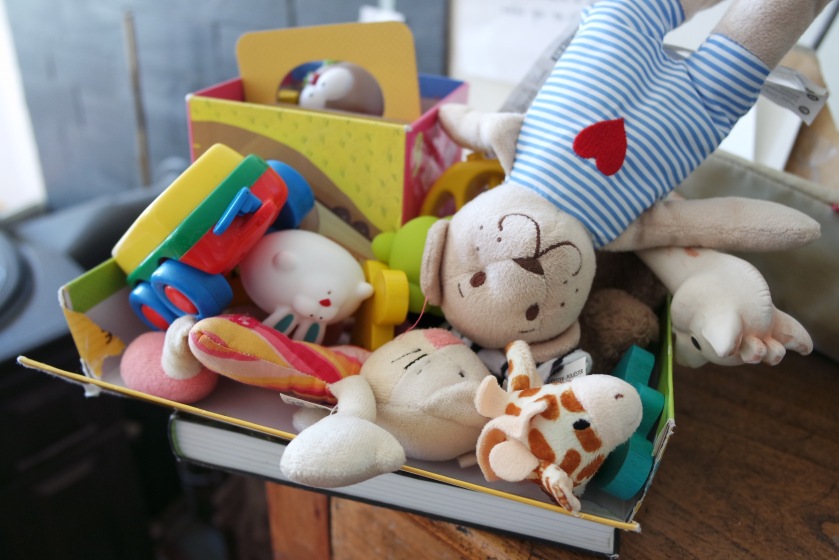The child under six is an explorer who understands the world using their senses. So, what we offer them for exploration must represent this world, spark their curiosity and stimulate their growing intellect. Instead, as a society, we have taken our children far away from the richness of the natural world and placed them in a plastic one filled with toys that offer little or no stimulation to their hungry senses.
How we have viewed Toys?
- An Entertainment
Most toys that we buy off shelves are merely used as fillers to entertain the child. They are designed to occupy their attention for a short span of time and often fail to do even this because of their superficial nature and we see them move from one object to another, visibly hungry for more. These toys make sounds and noises when buttons are pressed, making them artificial and over stimulating. This kind of distorted representation only takes them further away from understanding their world.

- Plastic is Easy
The other problem with most toys is that they are made out of a single material – PLASTIC. The reason being, plastic is most durable, affordable and endures the child’s handling. But in guaranteeing their safety, plastic toys rob children of many sensorial experiences. Imagine this curious explorer take plastic after plastic to their mouth only to receive the same information from each of them. It is ironic that the plastic which is so colourfully decorated on the outside fails to offer them anything more than that.
“Children need nature for the healthy development of their senses and therefore, for learning and creativity too.”
Richard Louv, Last Child in the Woods
- More is Better
Because the child’s attention is easily waned with these toys, we feel the need to buy more to occupy their time and slowly, they begin to take up a huge portion of our homes. They are then dumped in big buckets, making it impossible for the child to take a toy of their choice without pouring everything else on the floor. We gradually convince ourselves that young children have lesser attention spans and feed this fallacy with more and more toys.
How we CAN view Toys?
The toys that we surround the child with must invite them to use each of their senses, raising many questions in their heads that lead to further exploration and discovery.
- Experience
Instead of viewing toys as entertainers, let us look at them as experience-givers or teachers. Before choosing a toy, close your eyes and hold the toy between your hands. Feel the texture, take the toy to your nose and take in the unique scent, shake the toy to see if it makes any noise and then open your eyes to see how it looks visually. This experiment will give an idea of how many different experiences a simple object can offer. Look for toys made out of different natural materials such as bamboo, brass, silver, steel, wood, copper and natural fabric such as cotton, silk or wool. These can be part of your immediate environment or something that the child sees others using.
Bamboo shakers, metal rattles, a leaf or flower, a small cup, spoon or tumbler, a bangle, honey dipper, balls made from different kinds of natural fabric, dry gourds with seeds, wooden clackers, a small brush with soft bristles, bells, variety of vegetables and fruits.
- Abstraction & Imagination
Every concrete experience that the child has in the world feeds their intellect and helps them create abstractions. An abstraction helps the child hold the world in their little heads. It is this abstraction that helps them blossom as adults with vivid imaginations. If plastic is the only material we offer them, then that will form the basis of their imagination. Instead, if we open up the world and show them different ways to explore it, they will create many abstractions each day which will also aid in the appreciation of the natural world.
When truly present in nature, we do use all our senses at the same time, which is the optimum state of learning.”
- Less is More
In a world of abundance, we are constantly led to believe that more is better. When a child is bored with a toy, it is not time to buy another one but to show another way to explore the same toy. When we buy and hoard buckets and buckets of toys, they lose value and children run from one to the other, finding it hard to settle down with any. It is important to have variety but limit the number that we offer them at any given time.
The world is filled with abundant riches; we only need to pause for a moment and look. Let us pack the plastic away and instead offer our children toys that are a piece of their environment. Let the child take it, explore it, own it and become a part of it!

One thought on “The Toys in our Children’s Lives”